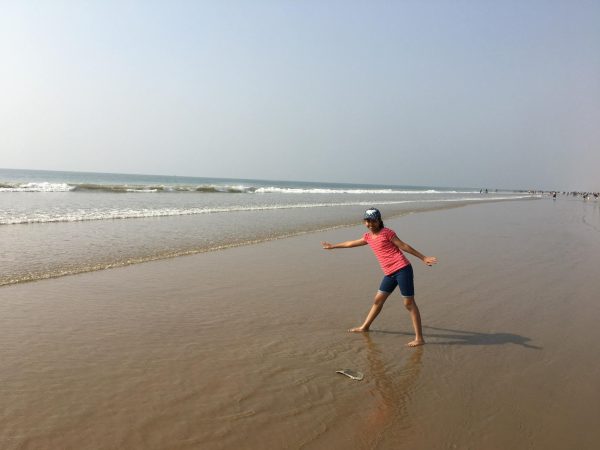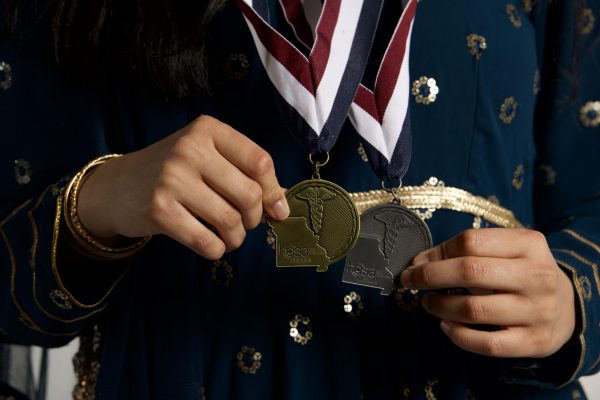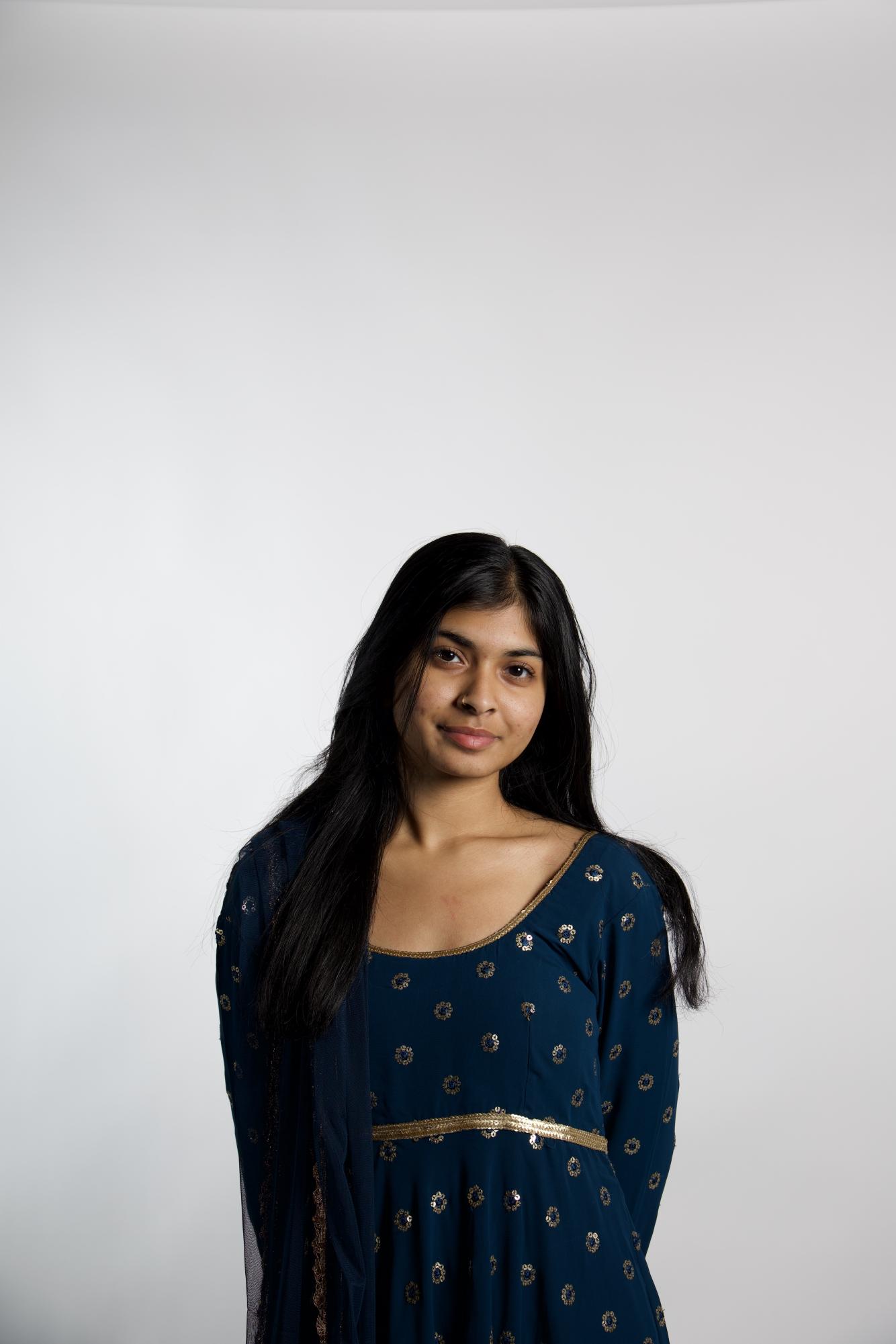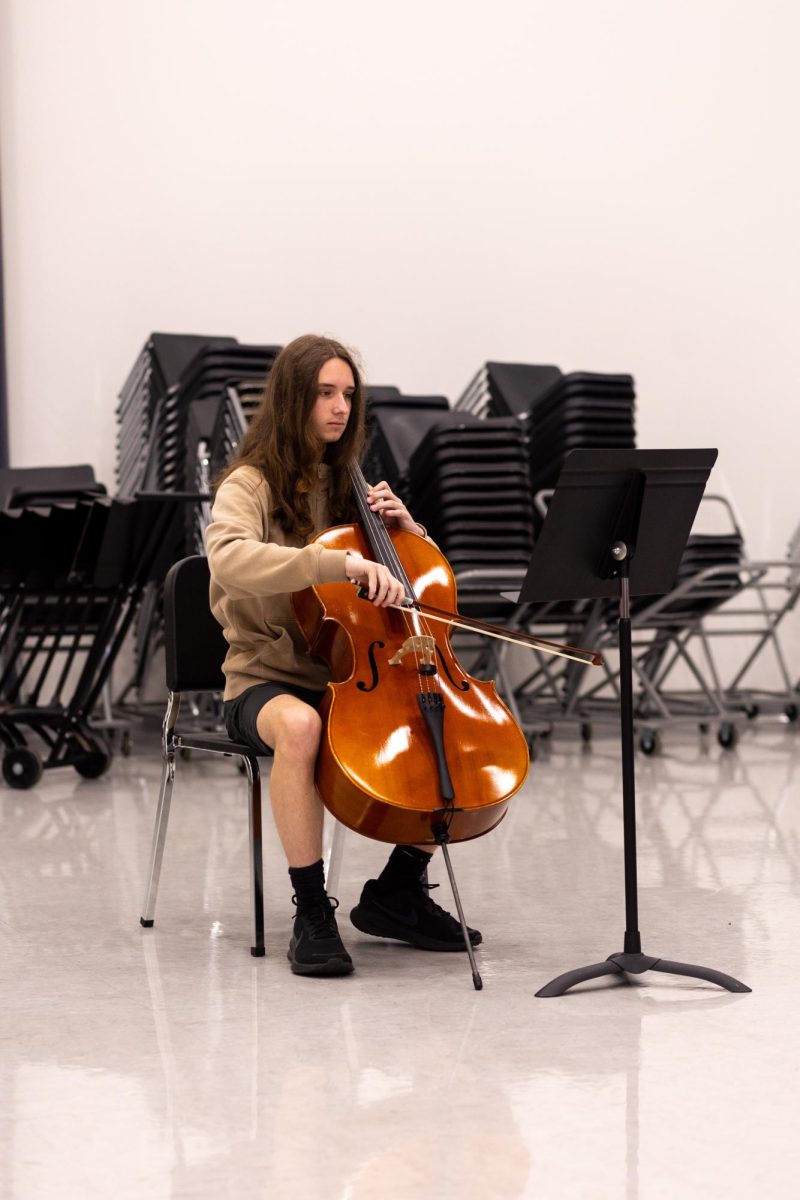From West Bengal to the Midwest, Stuti Dasgupta (12) has traveled with more than just luggage. She has brought music, culture and a mission to make space for voices like hers. Stuti was born in Wisconsin, where she lived for the first six months of her life before making her way to India, where the majority of her family lives. She spent 10 years in India before her parents, sister and her moved back to the United States. She spent the next years moving from Illinois, New Jersey and Missouri.

As a shy kid, adjusting to living in Missouri was somewhat difficult for Stuti. The stark contrast between the culture she grew up surrounded by, and the one currently surrounding her, was ever present in her mind.
“It’s weird to come from a place where everyone looks like you, grew up in the same place and has the same cultural interests, to a place where you’re the minority,” Stuti said. “You don’t really see many people like [you], people have different childhood influences and they grew up in different ways.”
Stuti’s sister, Oishi, is in seventh grade at Ladue Middle School. She recalls watching her sister adjust to life and school after moving to Missouri.
“When we first moved [to St. Louis, Stuti] was in middle school,” Oishi said. “It was hard for her to make friends [at the school] and relate to other people.”
During middle school, Stuti struggled to feel accepted by her peers. The differences between her Bengali food and the school cafeteria’s burgers and pizza were glaring.
“One time this girl told me she didn’t like the smell of [my food] and that really threw me off,” Stuti said. “ And then every day since then, I used to go to the bathroom and eat lunch as quickly as I could. I wanted to be liked by everyone and wanted no one to judge me for my food.”
Despite the obstacles Stuti faced in her childhood, she walked away with a deeper understanding of herself and a stronger bond to her culture. This has helped her overcome many obstacles in the years since.
“Once I started embracing [my culture] and finding people [who shared my culture], I realized it was a very universal thing to have these feelings [of not fitting in],” Stuti said. “It’s also really good when you come out of that and can truly show your background and your family identity to friends that don’t share that.”
One of Stuti’s close friends, Reva Shetty (12), has known Stuti for nearly two years. Having lived in India for 14 years herself, Shetty understands Stuti’s personal struggle to rediscover and embrace her cultural ties.
“When I met her she was scared to show her culture even though she was very proud of it,” Shetty said. “I think she has grown so much in terms of how much she embraces her culture.”
Over time, Stuti has embraced her identity and made an effort to educate other people about her culture.
“I would say [moving to St. Louis] influenced me to not blend in with everything and just be proud of what I’m interested in,” Stuti said. “[Moving influenced me] to not be afraid to show my culture, dance in front of people that don’t know what the words mean or sing in front of people that have never heard these types of songs before.”
Shetty has witnessed Stuti’s growth both in her culture and personal life over the past few years. She recalls sharing her own cultural experiences with Stuti and helping her find enjoyment in the things relating to her culture.
“[Stuti’s] culture is very rich and very fulfilling,” Shetty said. “It makes her happy when she wears certain [cultural] clothes, sees certain movies or listens to certain songs. It just makes her feel seen.”
MUSIC
One way Stuti found herself connecting to her peers was through music. Stuti enjoyed singing while she lived in India and has continued singing after moving to the United States. She joined the school choir, took vocal lessons and performed with singing groups, as well as singing at festivals and celebrations with her family.
“I used to be a regular participant [at the Bengali festivals], just singing [cultural] songs, sometimes with my mom, sometimes with other people and that was always really fun,” Stuti said.
While Stuti enjoys singing, her younger sister plays the guitar and the flute. They occasionally perform together at talent shows such as Rams Around the World or other performances, often playing Bengali songs.
“I used to sing a lot of [Bengali] songs, and I still do because [Bengali music] is my favorite type of music,” Stuti said. “The songs are very peaceful and calming and they are really nice to listen to.”
Having grown up singing in India, music has allowed Stuti to connect to her culture and cwwhildhood memories. She believes that the first part of her life in India was extremely formative for her, despite the distance and time she has travelled from then to now.
“Hearing [that music] from my childhood and singing definitely connects me back to where I grew up,” Stuti said. “Even though it was only half of my life, it was the first part of my life, so I feel a very strong connection to that even though I live [in St. Louis] now.”
Bengali culture and music has also created a fun and engaging way for Stuti to bond with her friends and make new ones. Shetty recalls how Stuti and her first began strengthening their friendship through Bollywood media such as popular songs, musicians and styles of dance.
“Stuti and I bond a lot over Bollywood music and dance and movies in general,” Shetty said. “We also get each other because Bengali sounds very similar to Hindi and has similar words.”
Over the years, Stuti has begun singing more pop and modern American songs. She is currently a member of the all female a capella group, known as Viva Voce, which performs a variety of pop songs and other music.
“After moving [to St. Louis], I also started singing more pop songs and jazz,” Stuti said. “And I just kept singing. I was part of the choir from fifth to eighth grade.”
Shetty has attended multiple of Stuti’s performances for both Viva Voce and Bengali events. While Shetty is not a singer, she appreciates the beauty of Stuti’s singing.
“She is a phenomenal singer,” Shetty said. “She really connects with it and loves the songs that she sings.”

(Isabella Soyfer)
MAGAZINE
Stuti continues to strengthen her cultural connections through the magazine she cofounded, The AAPI Experience Magazine. The magazine includes 14 staff members and publishes a new issue every four months. Stuti hopes to educate her peers about Asian culture and media representation through the magazine.
“There’s a lot of Asian underrepresentation or misrepresentation in the media,” Stuti said. “I think that having a magazine that people can see and read that is written by Asian people about their own identities [and experiences] can help overcome some of the misrepresentation that everyone sees in the media.”
Another motivation for Stuti is helping her peers connect to their culture. She often encourages the magazine’s staffers to cover stories about their Asian role models, personal experiences and struggles; published stories so far have ranged from Asian American success stories in St. Louis to covering mental health initiatives run by Asian organizations locally and internationally.
“They can see that they’re not alone in this,” Stuti said. “That everyone goes through these challenges [as Asian-Americans] and they can be overcome.”
Stuti spends much of her free time working on the magazine, including meeting with the magazine’s staff members, coordinating group activities and finalizing stories before they are published. She does this work during her designated breaks, such as vacations.
“I see her working on [the magazine] a lot,” Oishi said. “During vacations and breaks she is always trying to meet deadlines for the magazine.”
SCIENCE
Outside of the activities that connect Stuti to her culture, she is involved in numerous clubs. She is a member of Asian American Civic Scholars, Health Occupations Students of America, Youth Leadership St. Louis and Science National Honor Society.

“I really like [these clubs] because I get to help introduce other like minded people who are interested in science to new community service opportunities,” Stuti said. “I get to help their interests grow in different areas of science, because it is a very big field.”
The group Asian American Civic Scholars encourage scivic engagement among Asian American youth. When Stuti joined the club she was trying her best to fit in with the people around her. After joining the group, she felt that she was pushed out of her comfort zone.
“[Asian American Civic Scholars] used to put on cultural events to celebrate holidays such as Chinese New Year or we would put up Bollywood dance rehearsals,” Stuti said. “[We did] a lot of different cultural things to get different people exposed to these cultural experiences.”
Her interest and experience in the science field has led her to commit to an advanced six year medicine program at the University of Missouri-Kansas City.
“She really enjoys what’s going on with people on a much deeper level and she likes logic,” Shetty said. “She has a thirst for knowledge that I don’t see in a lot of people and I really appreciate it.




![School resource officer Rick Ramirez sits in his office. He usually spends little time in his office throughout his day of work, focusing on other issues. “Where our students are, I try to be,” Ramirez said. “Sometimes I get off at 2:45 p.m. when nothing’s going on, or sometimes I get off at 10 p.m. [Those are] my hours.”](https://laduepublications.com/wp-content/uploads/2024/12/Hsiao_20241203_ID_RickRamirez_007-799x1200.jpg)

![Reva poses in front of her home and address plaque. After reuniting with her father and grandparents, she has made many new memories and retained her culture. “We have a lot of Indian cooking going on,” Reva said. “I also like telling people about Indian food, mainly because that’s something that really connects me to [Mumbai].”](https://laduepublications.com/wp-content/uploads/2024/12/At-Home-1200x799.jpg)







